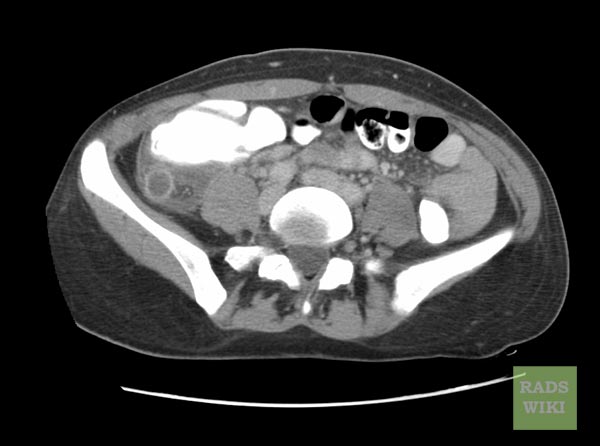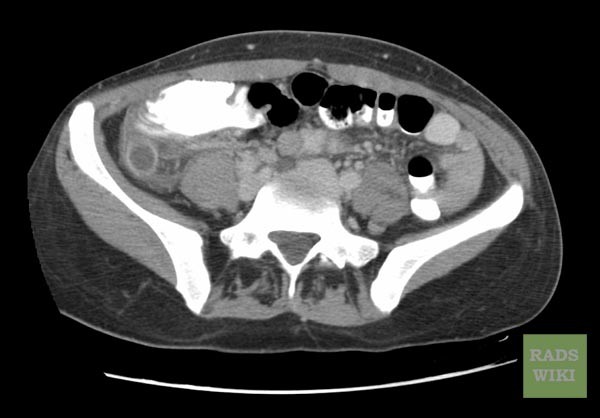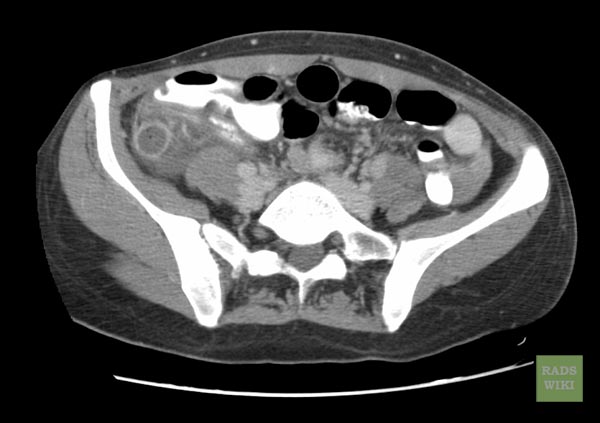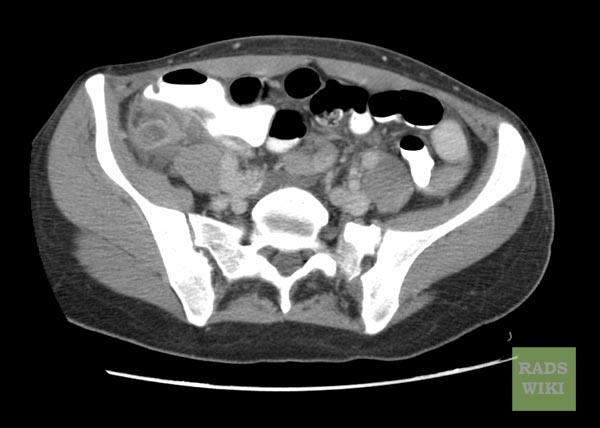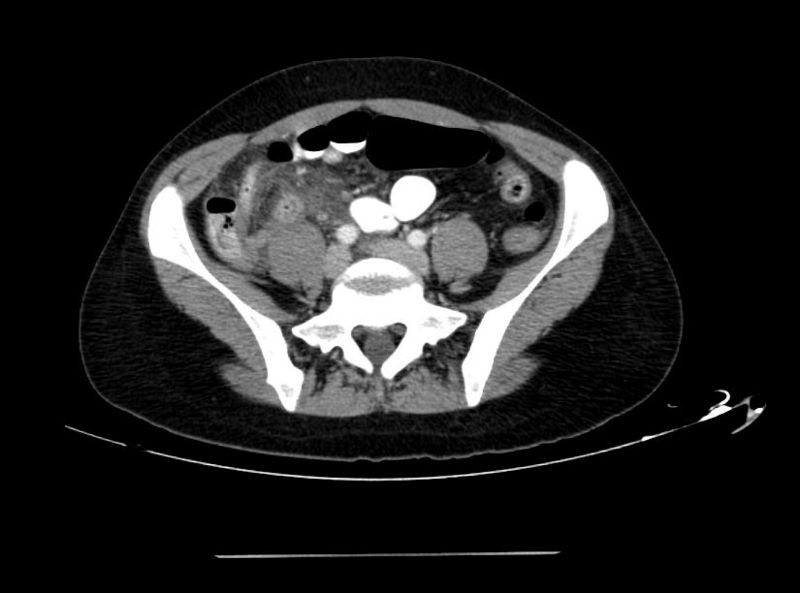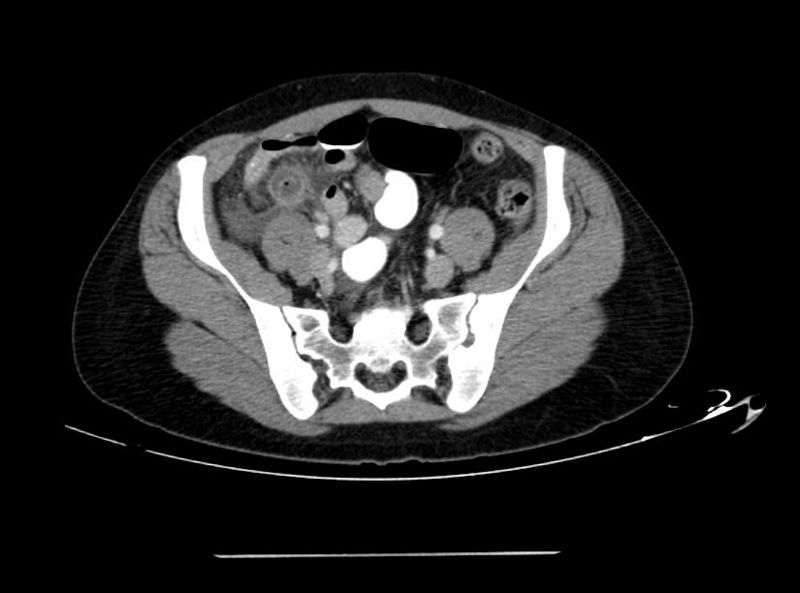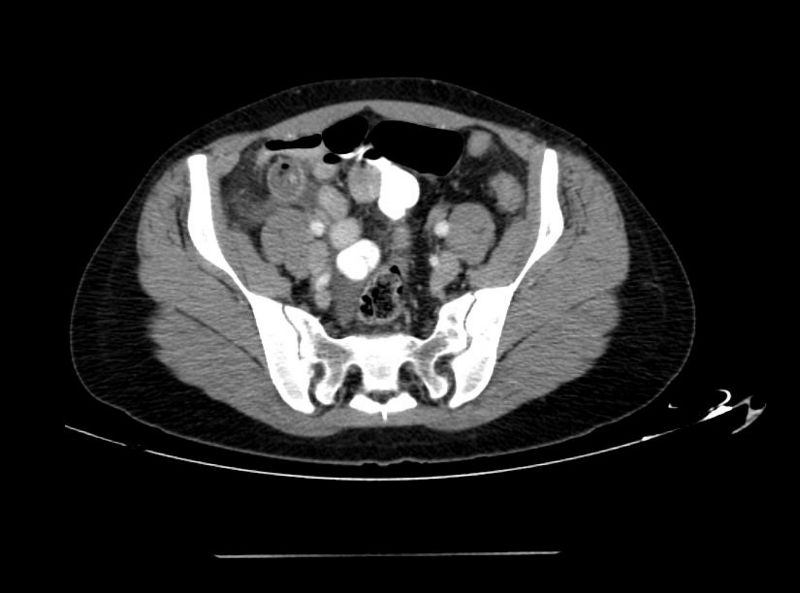Appendicitis CT
|
Appendicitis Microchapters |
|
Diagnosis |
|---|
|
Treatment |
|
Case Studies |
|
Appendicitis On the Web |
|
American Roentgen Ray Society Images of Appendicitis |
Editor-In-Chief: C. Michael Gibson, M.S., M.D. [1]
Overview
As many as 45 percent of patients do not display classic signs of acute appendicitis, making imaging a potentially useful tool. CT scans are the diagnostic test of choice for detecting appendicitis. They can provide critical information regarding the size of the appendix. CT scans are preferred over ultrasounds for the detection of appendicitis.
CT
- To balance the risks of negative appendectomies, delayed surgery, or perforated appendices, physicians are increasingly ordering CT scans.[1]
- In places where it is readily available, a CT scan has become the diagnostic test of choice for detecting appendicitis, especially in adults whose diagnosis is not obvious on history and physical examination.
- Diagnosis of appendicitis by CT is made more difficult in very thin patients and in children, both of whom tend to lack significant fat within the abdomen.
- The accurate diagnosis of appendicitis is multi-tiered, with the size of the appendix having the strongest positive predictive value
- A properly performed CT scan with modern equipment has a detection rate of over 95%.[2]
Use as a Diagnostic Tool
- CT scans and ultrasound is more useful in the diagnosis of the disease when atypical symptoms are present. Surgical findings (suppuration, abscess, perforation, etc.) are more apt to be severe in cases presenting with these symptoms.[2]
Signs of Appendicitis on a CT Scan
- Appendiceal thickening with the outer-wall-to-outer-wall transverse diameter greater than 6 mm.[3]
- Appendiceal wall thickening (wall ≥ 3mm)[4]
- Appendiceal wall hyperenhancement
- Mural stratification of the appendiceal wall
- Appendicolith(s) (present in one third of patients with appendicitis).
- Periappendiceal inflammation includes periappendiceal fat stranding, thickening of the lateral conal fascia, and mesoappendix, extraluminal fluid, phlegmon, abscess, ileocecal mild lymph node enlargement, and inflammatory thickening of contiguous structures.[4]
Copyleft images obtained courtesy of Radswiki [2]
Patient #1: Right lower quadrant pain
Patient #2: Right lower quadrant pain
Patient #3: Right lower quadrant pain
References
- ↑ Pender,N. CT Scans in the Diagnosis of Appendicitis.Virtual Mentor.2006; 8 (3): 154-156.
- ↑ 2.0 2.1 Appendicitis. Wikipedia (26 November 2015).https://en.wikipedia.org/wiki/Appendicitis#Imaging Accessed on December 7, 2015
- ↑ Webb EM, Wang ZJ, Coakley FV, Poder L, Westphalen AC, Yeh BM (2010). "The equivocal appendix at CT: prevalence in a control population". Emerg Radiol. 17 (1): 57–61. doi:10.1007/s10140-009-0826-6. PMC 2773125. PMID 19597855.
- ↑ 4.0 4.1 Choi D, Park H, Lee YR, Kook SH, Kim SK, Kwag HJ, Chung EC (2003). "The most useful findings for diagnosing acute appendicitis on contrast-enhanced helical CT". Acta Radiol. 44 (6): 574–82. PMID 14616200.
